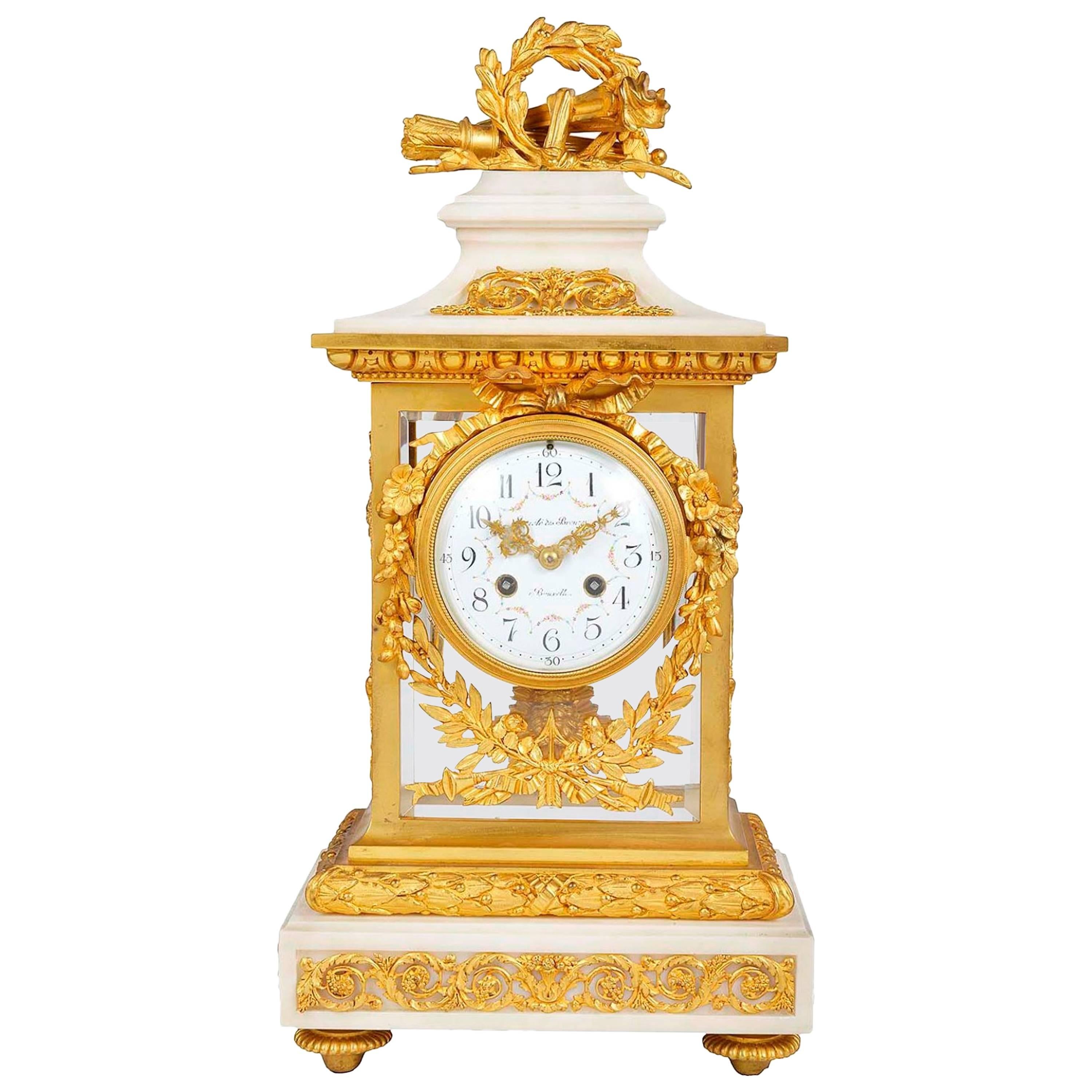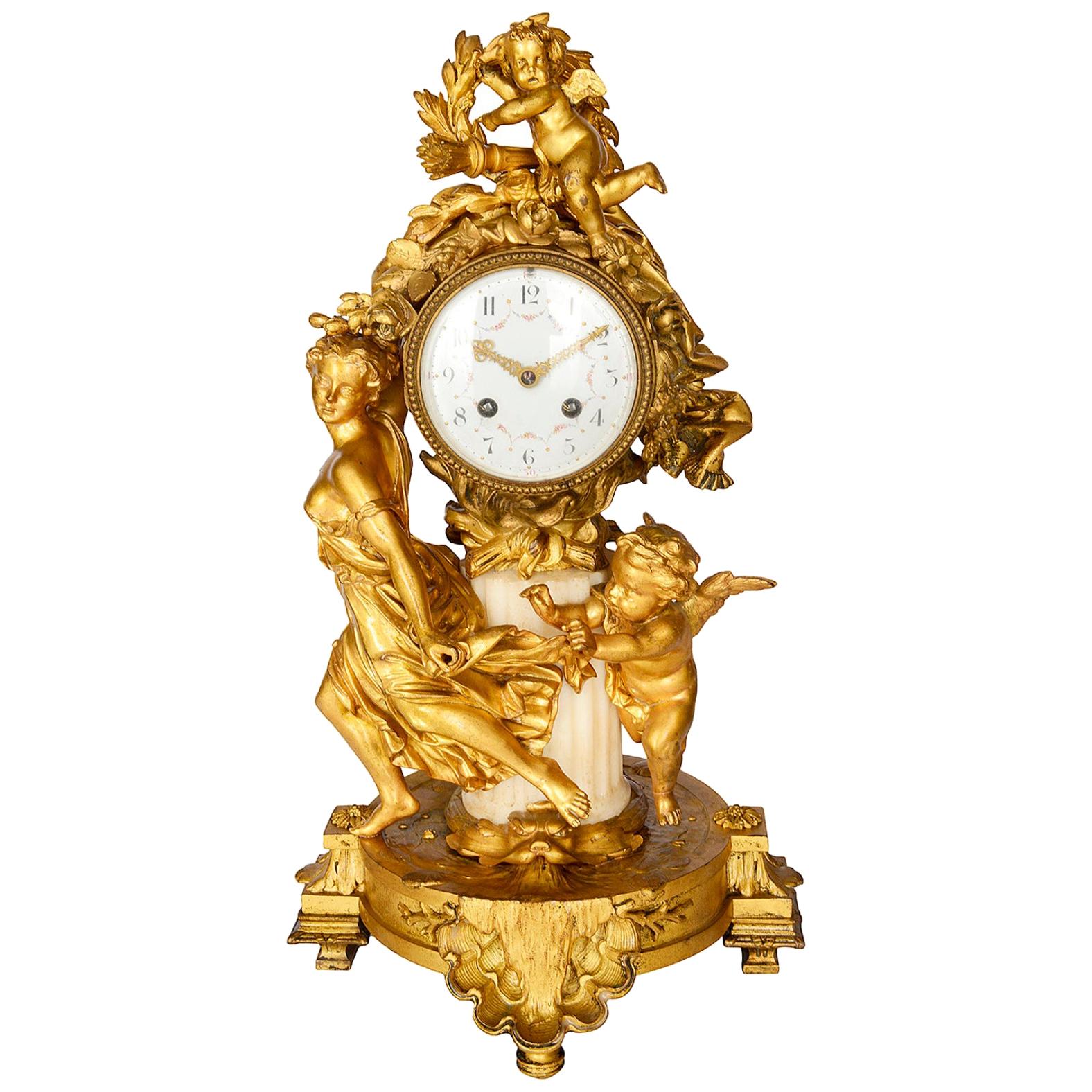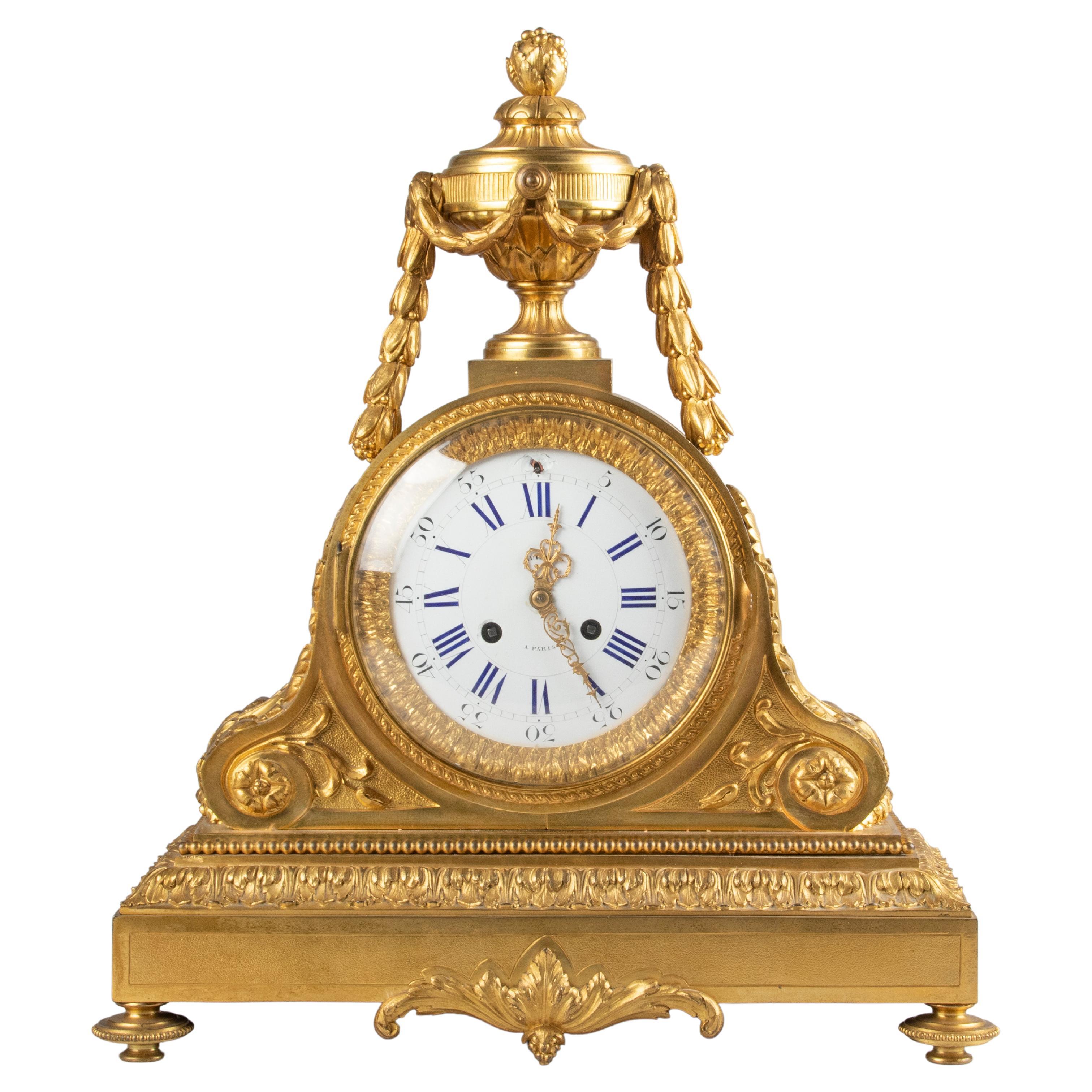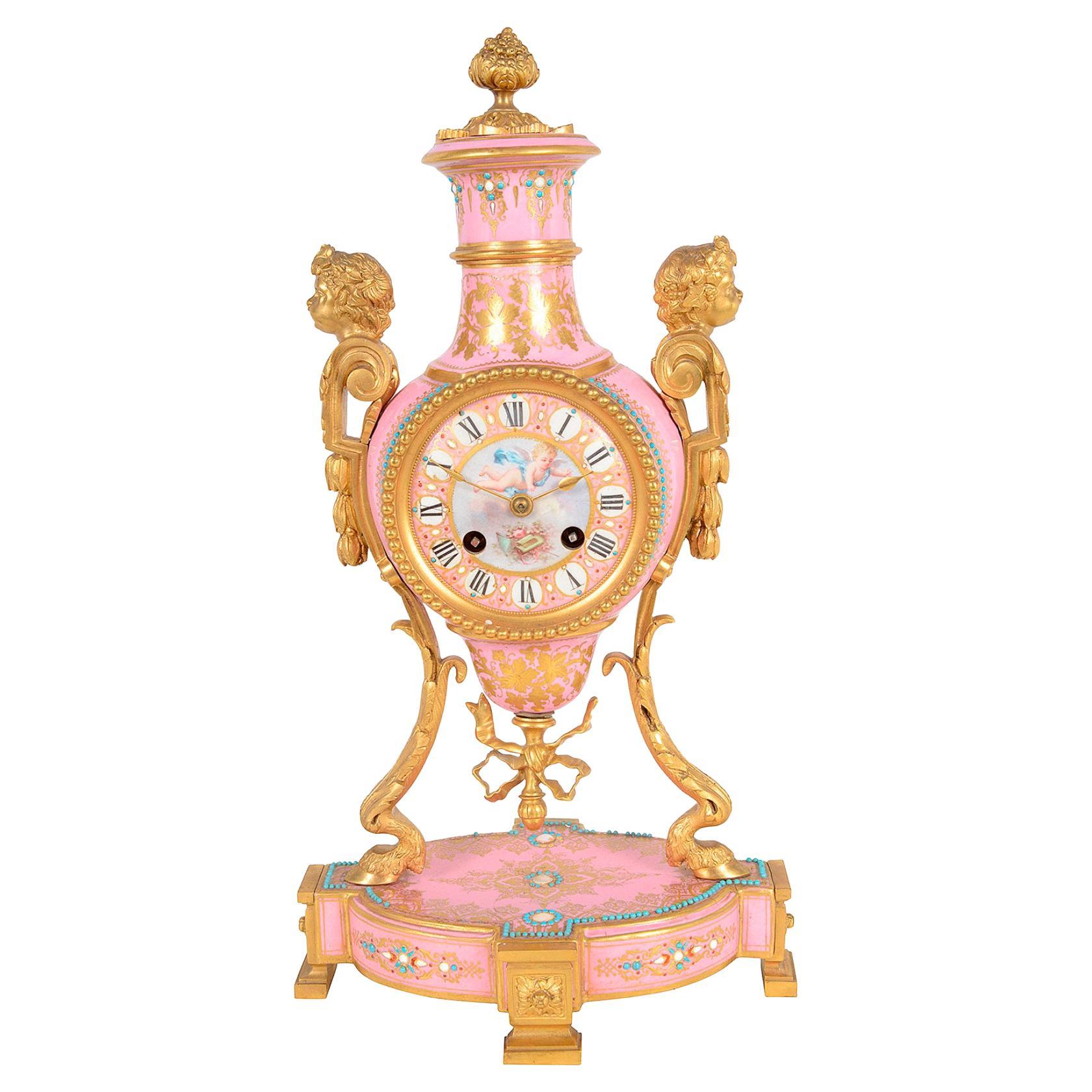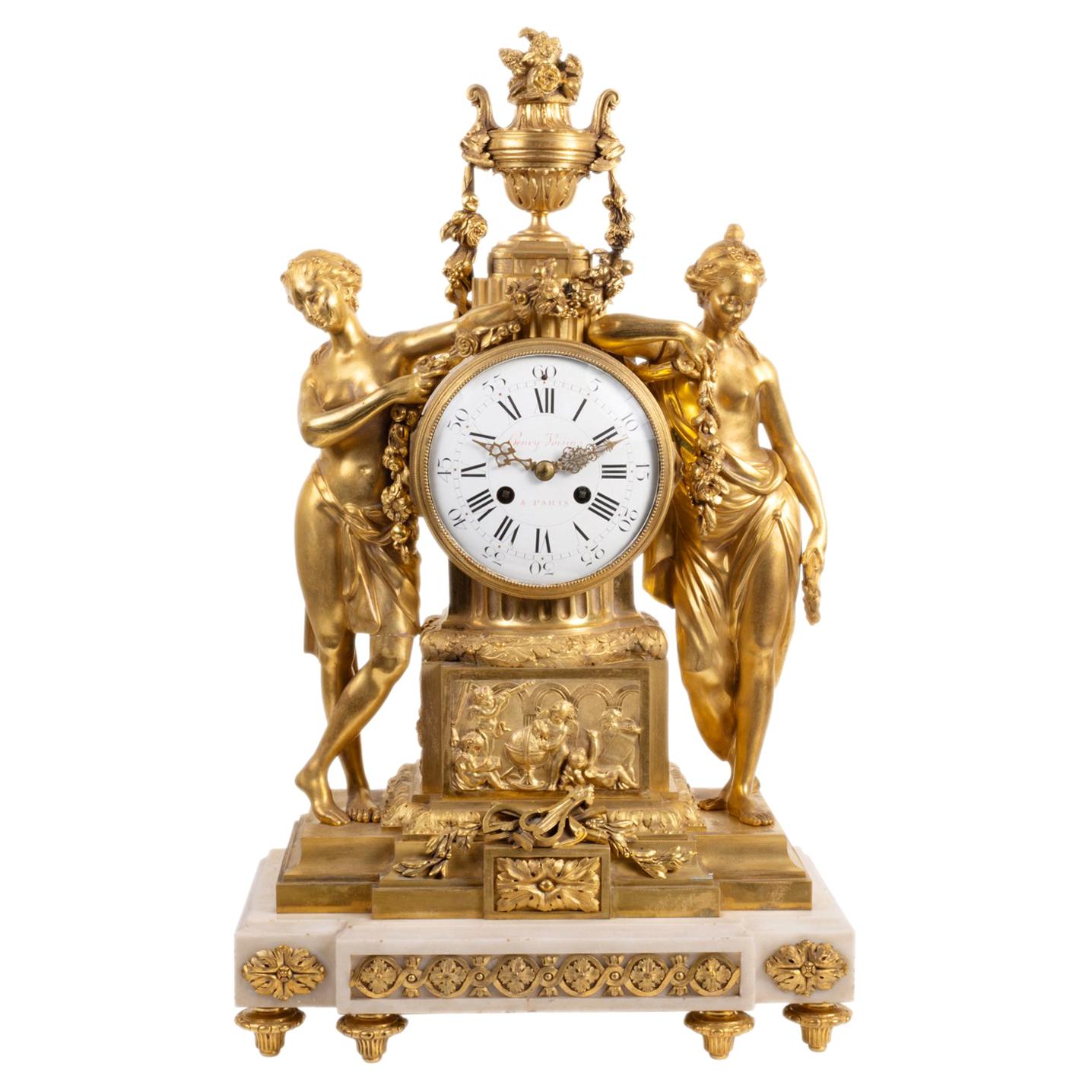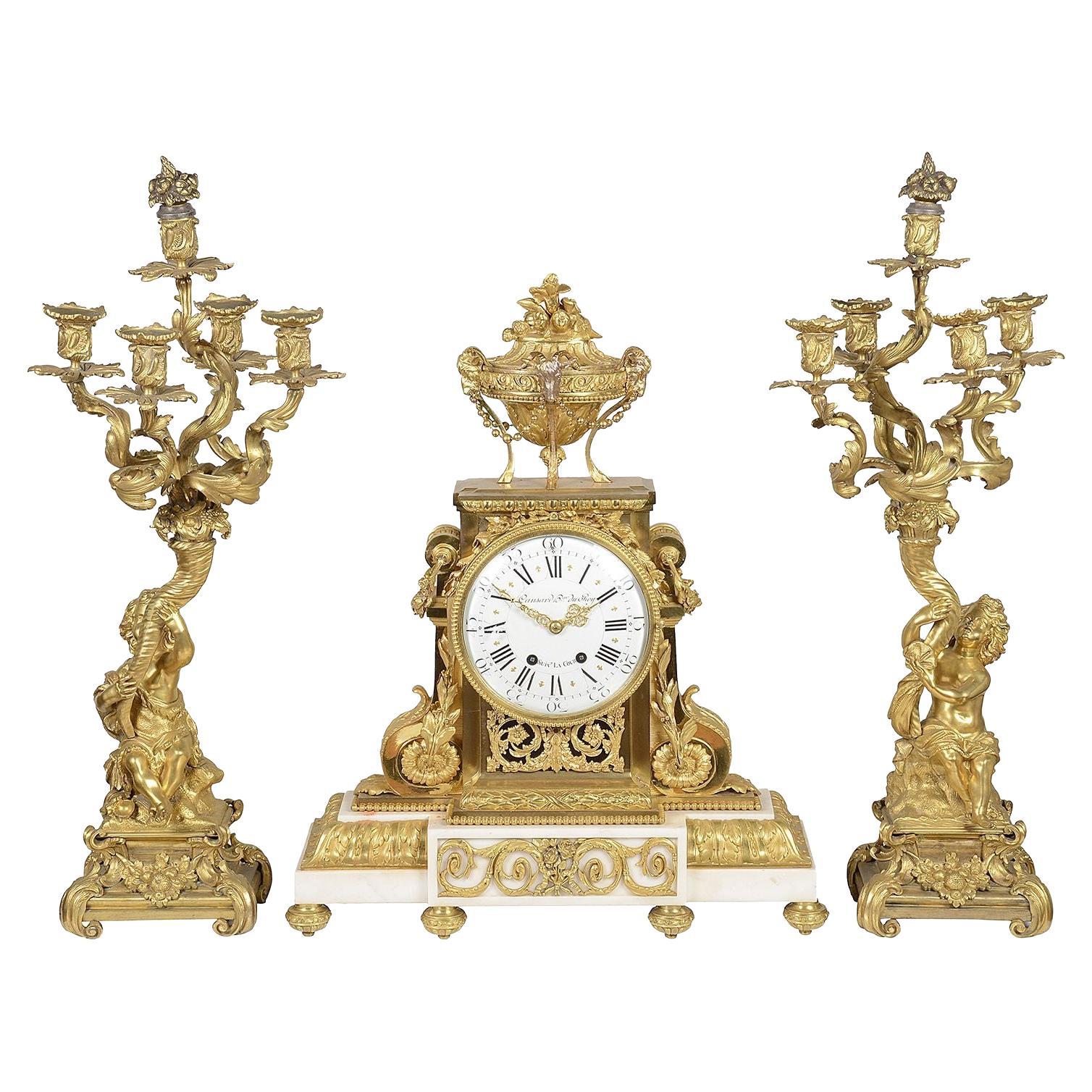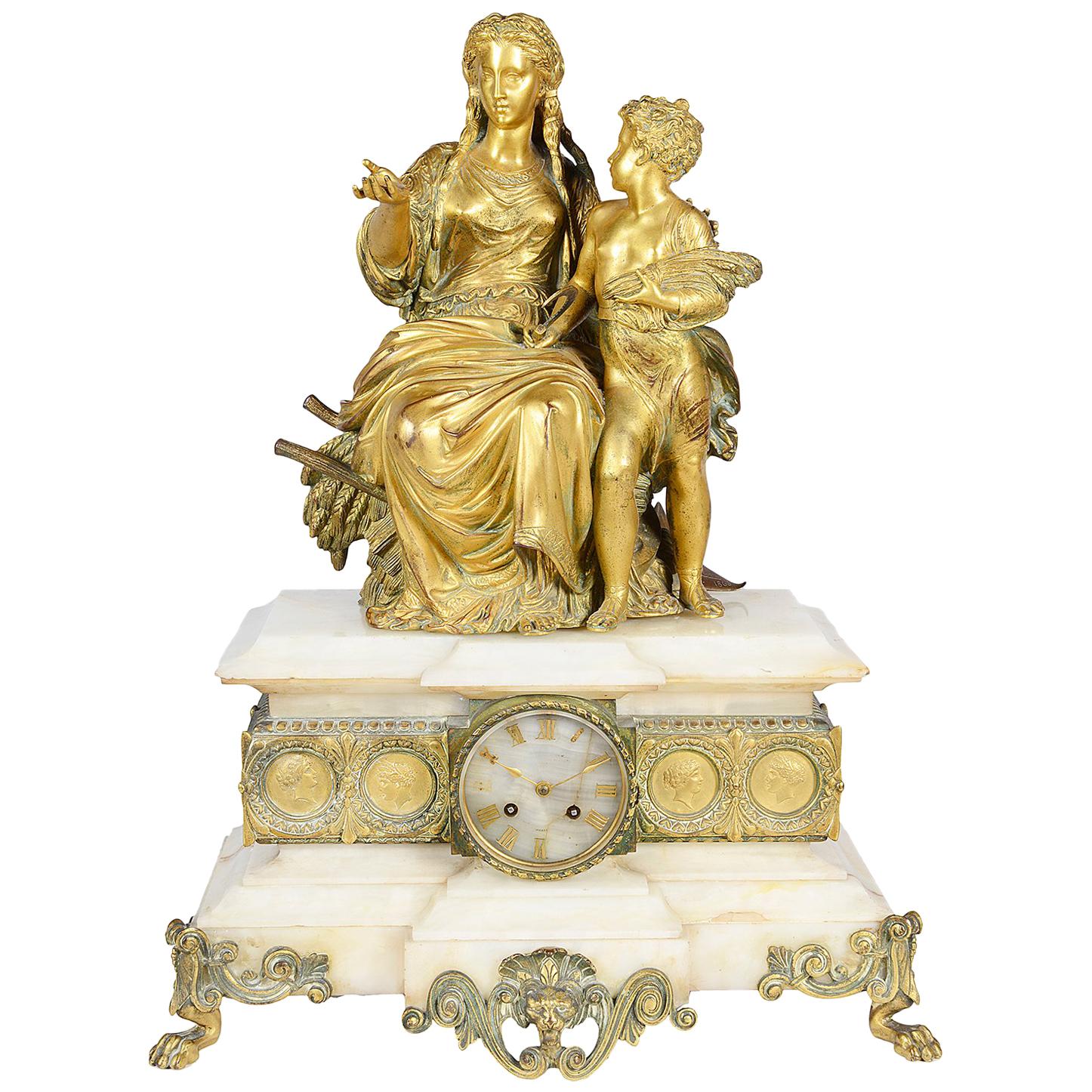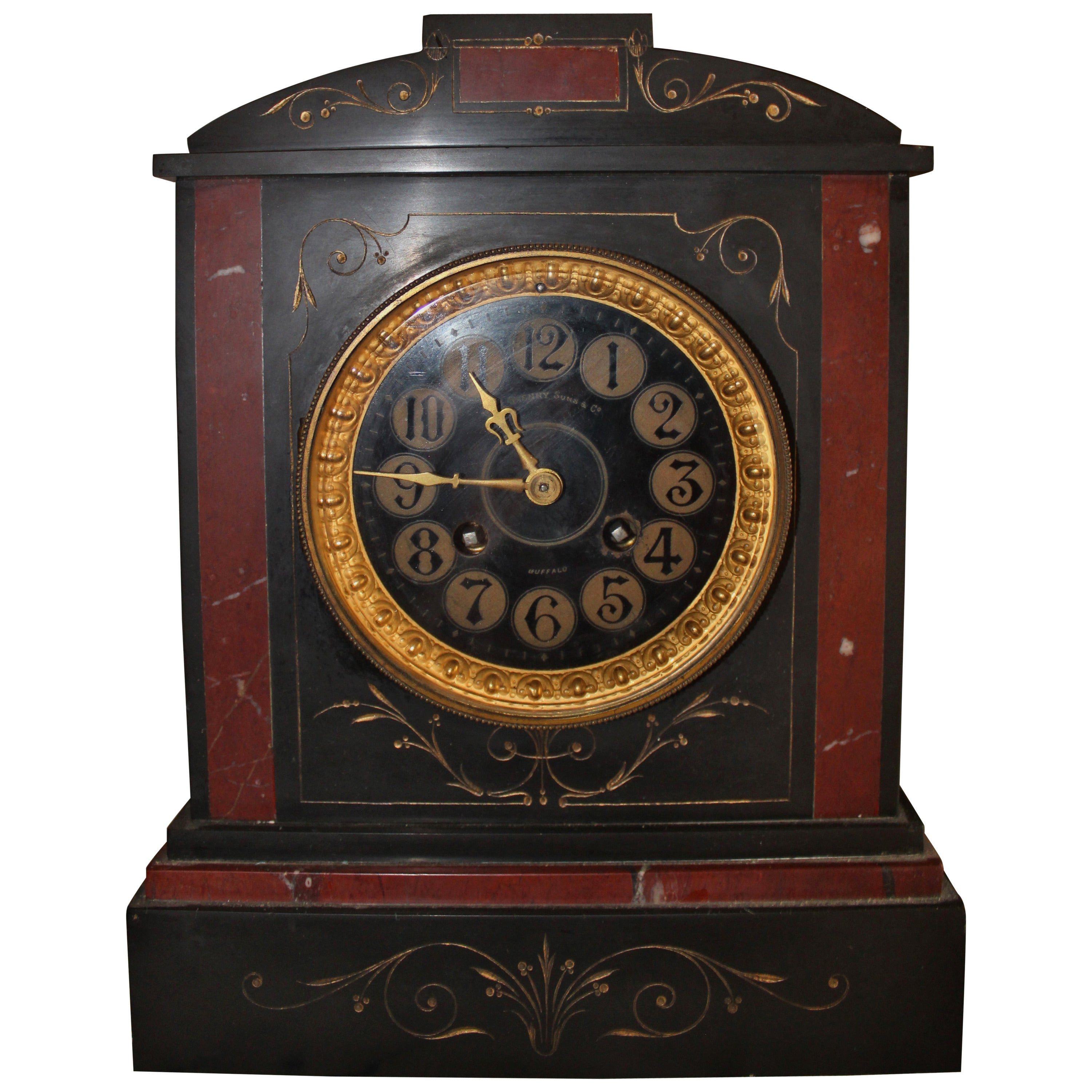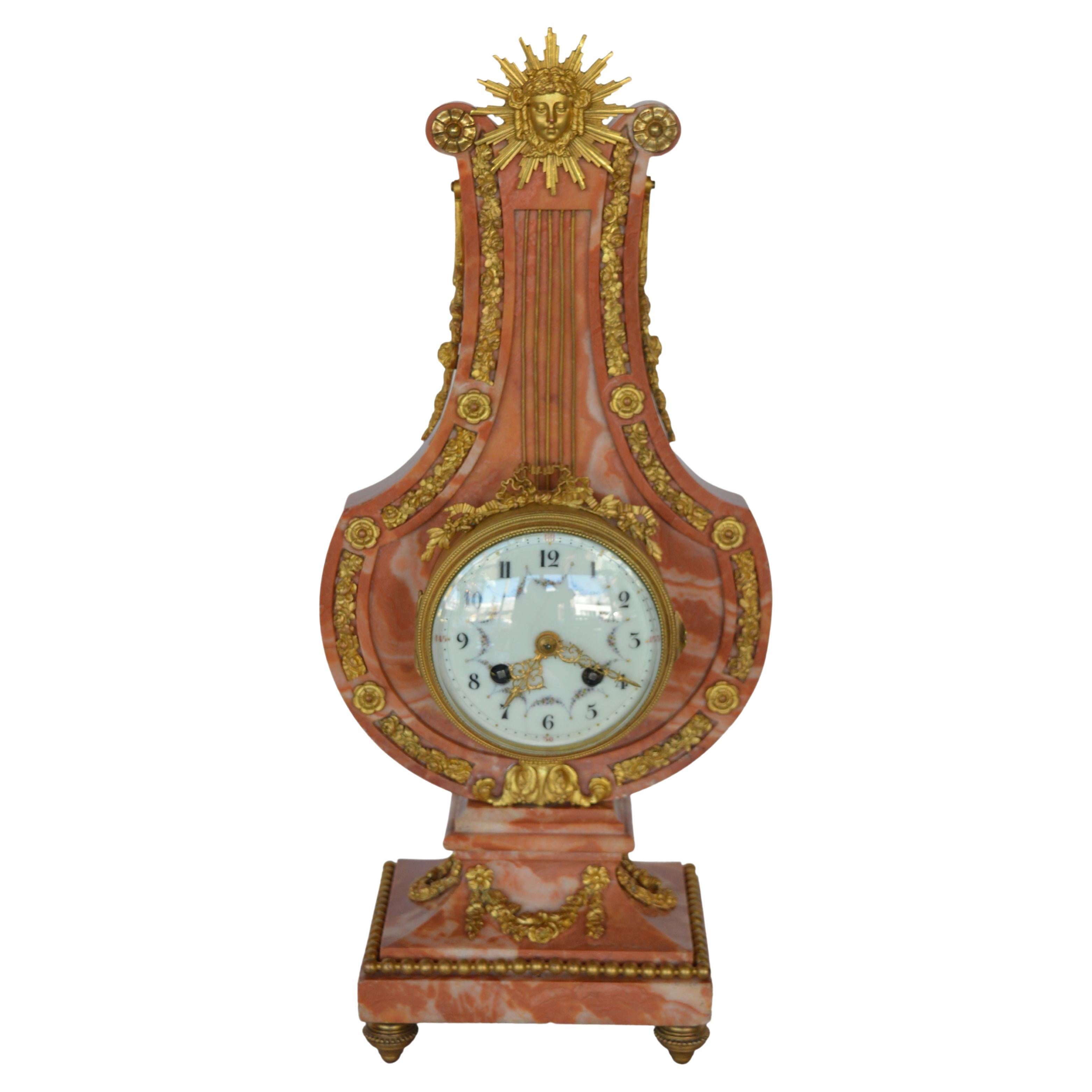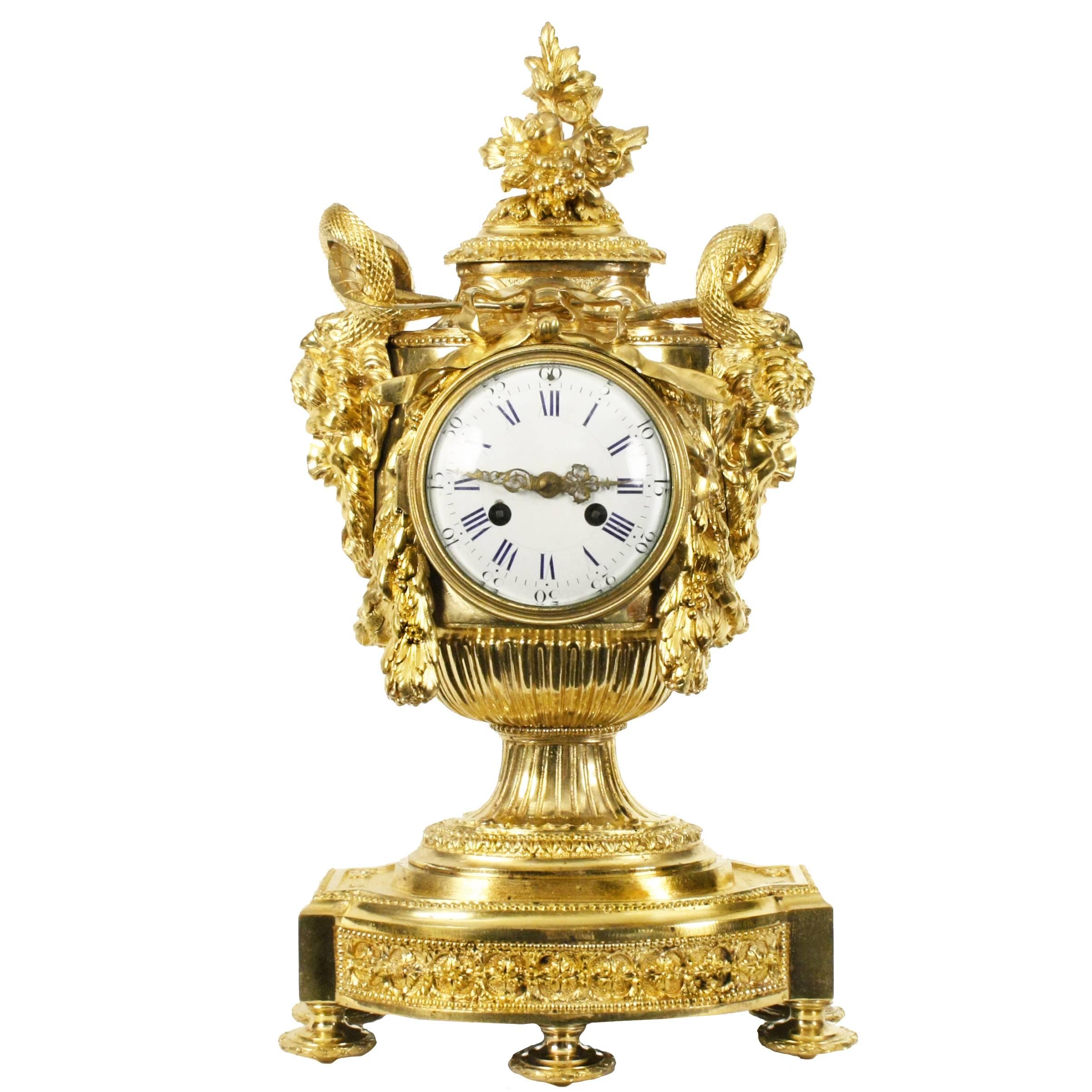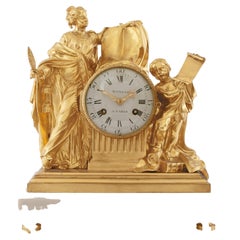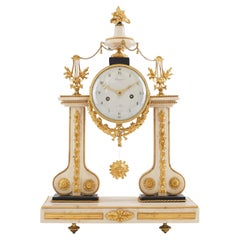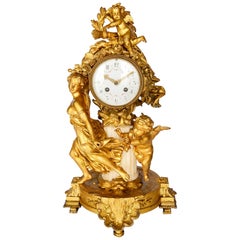
BY E.DUMOULINEUF À PARIS A of mantel clock in the style of Louis XVI, the 19th c
View Similar Items
Want more images or videos?
Request additional images or videos from the seller
1 of 5
BY E.DUMOULINEUF À PARIS A of mantel clock in the style of Louis XVI, the 19th c
About the Item
- Dimensions:Height: 14.97 in (38 cm)Width: 13.78 in (35 cm)Depth: 7.49 in (19 cm)
- Style:Louis XVI (Of the Period)
- Materials and Techniques:
- Place of Origin:
- Period:
- Date of Manufacture:1840-1860
- Condition:Rewired. Wear consistent with age and use. The clock is in excellent and perfect working condition. In addition, it was recently cleaned and serviced by a professional clockmaker who specializes in maintaining museums, The eight-days going movement. It strikes the hour and half and hour on it.
- Seller Location:Warsaw, PL
- Reference Number:1stDibs: LU5826226368332
About the Seller
5.0
Vetted Seller
These experienced sellers undergo a comprehensive evaluation by our team of in-house experts.
Established in 2021
1stDibs seller since 2021
22 sales on 1stDibs
Typical response time: 9 hours
More From This SellerView All
- Mantel Clock 18th Century Louis XVI Period by Baillon À ParisLocated in Warsaw, PLThis clock was made by Jean-Baptiste Baillon III, one of the most skilled and innovative makers of his day. He supplied the most illustrious clientele, not least the French and Spanish royal family as well as distinguished members of Court and the cream of Parisian society. This is a unique, authentic antique French table or mantel clock, which is in finely chiseled and gilded bronze. The dial has outer Arabic numerals and inner Roman numerals with a fine pair of pierced gilt brass hands for the hours and minutes. Next to the clock is a tall lady figurine, accompanied by a child. The woman is holding a book in her right hand and a feather pen...Category
Antique 18th Century French Louis XVI Mantel Clocks
MaterialsMarble, Bronze
- Mantel Clock 18th Century Louis XVI Period by Arnoux À ParisLocated in Warsaw, PLThis elegant portico clock crafted in transitional Louis XVI – Empire style from ormolu, white and black marble, is signed on the dial “Arnoux à Paris”. Decorative motifs of Louis XV...Category
Antique Late 18th Century French Louis XVI Mantel Clocks
MaterialsMarble, Bronze
- Mantel Clock 19th Century Styl Empire by Ferdinand Berthoud À ParisLocated in Warsaw, PLOrmolu bronze mantel clock flanked by a troubadour and musical instruments, signed 'Ferdinand Berthoud a Paris'. The end of the 18th and beginning of the 19th century was a crucial time in which new technological advances helped to make watches more accurate and more portable. During the 1790s, the production of gilded bronze increased considerably as working conditions improved. The freedom of trade initiated by the French Revolution allowed many casters to develop large factories. The new factory environment gave them a chance to execute all stages of bronze work including drawing, casting, gilding, assembly, and trade of art objects. While the bronzers took creative liberty in creating all kinds of clocks in contrast to the noble and rigorous structure carried by the movement of neoclassicism. Under the reign of Empire, the case designs started gradually to develop away from a proportionate and strict classicism towards a baroque style and revival style. The rediscovery of medieval civilization was one of the intellectual curiosities of the beginning of the 19th century, with much input from the Ancien Régime and its institutions, rites and the medieval churches in which family ceremonies occurred. This early nineteenth-century figural mantel clock is surmounted by a medieval musician. To be more precise, it is a french troubadour. Troubadours were known for composing and performing lyric poetry for the nobility back during medieval times. The clock is featuring a chiselled bronze troubadour, dressed in medieval fashion while holding a flute, playing a tune from sheet music called "Du Troubadour" that is resting on top of the rectangular clock case. In addition to that, the clock features a gilt bronze lute or vielle resting on a small stool on the opposite side of the clock’s case. The white enamel dial features the inscription Berthoud and is underlined by a bronze entourage chiselled with palmette motif, plus encompassed by c-scrolls and wreaths. The original hands are in blued steel and encircled by Roman numerals indicating hour next to Arabic numerals indicating minutes. The small details that adorn the hexagonal plinth are reliefs, depicting two water fountains or basins on both sides with a lyre in between. The sculpted image of a lyre raised above the background features also foliage garlands tied on top with ribbons. The clock rests on seven spinning feet. The clock was made in the well-known workshop of the Berthoud’s family that was recognized for their excellent work by the King. Berthoud Clockmakers History. Ferdinand Berthoud was a horologist and author of extensive treatises on timekeeping as well as a Swiss clockmaker serving the king of France, that produced many marine clocks, including a weight-driven version that inspired the first American sea-going clock. He was born in Plancemont, Switzerland, the son of an architect and judiciary. In 1741 he began a three-year apprenticeship as a clockmaker under his brother, Jean-Henri. He made his first marine chronometer in 1754 (sent for trial in 1761) and in 1764 was appointed a member of the Royal Society, London and Horloger Mécanicien de Sa Majesté et de la Marine ayant l'inspection de la construction des Horloges Marines. In 1769, Ferdinand Berthoud sent for his nephew Pierre-Louis Berthoud (1754–1813), commonly known as Louis Berthoud, a talented young watchmaker and clockmaker, inviting him to come to Paris from Couvet, Switzerland, to pursue his apprenticeship. Louis helped Ferdinand manufacture and repair the sea clocks...Category
Antique Late 18th Century French Louis XVI Mantel Clocks
MaterialsBronze
- Mantel Clock 19th Century, Louis Philippe Charles X StyleLocated in Warsaw, PLA magnificent malachite and bronze clock. in which Apollo is sitting on the top of it. Apollo the god of nowledge, oracles, purity, art, music (he directed the choir of the Muses), ...Category
Antique Early 19th Century French Louis Philippe Mantel Clocks
MaterialsMalachite, Bronze
- Mantel Clock 19th Century, Louis Philippe Charles X StyleLocated in Warsaw, PLMantel clock 19th century Louis Philippe Charles X period ormolu pendulum with malachite plinth. This stunning clock is surmounted by a gilded bronze figure of a Greek god – Apollo playing on a lyre, seated on the malachite square...Category
Antique Early 19th Century French Louis Philippe Table Clocks and Desk C...
MaterialsMalachite, Bronze
- Wall Clock 19th Century Louis XVILocated in Warsaw, PLThis is a delicately gilded clock. Designed in the Louis XVI style, it is a very similar barometer. Originating from France in the 18th century, this watch gives the viewer an extrem...Category
Antique Early 18th Century French Louis XVI Wall Clocks
MaterialsBronze
You May Also Like
- 19th Century Louis XVI Style Mantel ClockLocated in Brighton, SussexA good quality 19th century French gilded, Louis XVI style ormolu mantel clock. Having a gilded wreath and arrow sheath above a white marble top, ormolu four glass case, with a white...Category
Antique 19th Century French Louis XVI Mantel Clocks
MaterialsMarble, Ormolu
- 19th Century Louis XVI Style Classical Mantel ClockLocated in Brighton, SussexA very impressive 19th century French gilded ormolu, rouge marble and bronze mantel clock. Having two classical reclining bronze nude male figure...Category
Antique 19th Century French Louis XVI Mantel Clocks
MaterialsMarble, Bronze, Ormolu
- French 19th Century Louis XVI Style Mantel ClockLocated in Brighton, SussexAn enchanting late 19th century French gilded ormolu and marble mantel clock, depicting cherubs playing, one chasing a young girl, the other hiding amongst a wreath and foliage. The ...Category
Antique Late 19th Century French Louis XVI Mantel Clocks
MaterialsMarble, Ormolu
- Large 19th Century Louis XVI Style Bronze Ormolu Mantel Clock Guibal ParisLocated in Casteren, Noord-BrabantA fine and large Louis XVI style French mantel clock, from the end of the Napoleon III period, 1870-1880. The clock is bronze casted and has a fire-gilded finish, the dial is enamele...Category
Antique 1870s French Louis XVI Mantel Clocks
MaterialsOrmolu, Brass, Bronze, Enamel
- 19th Century Louis XVI style Mantel ClockLocated in Brighton, SussexA good quality French 19th century Rococo gilded ormolu mantel clock. The eight day movement, chimes on the hour and half hour.Category
Antique 19th Century French Rococo Mantel Clocks
MaterialsOrmolu
- Louis XVI Style Pink Porcelain Mantel Clock, 19th CenturyLocated in Brighton, SussexA very good quality French 19th Century Louis XVI style gilded ormolu and 'Severs' style pink porcelain mantel clock. In the form of a vase with an inset clock face, an eight day dur...Category
Antique Late 19th Century French Louis XVI Mantel Clocks
MaterialsOrmolu
Recently Viewed
View AllMore Ways To Browse
Lapis Stone
6 Hour Clocks
All Antique Clocks
Ancient Empires
Antique Mantel Clock Case
Gilded Napoleon
Gilded Mantel
French Clocks From The 19th Century
Flower Clock
Antique French Clocks 19th Century
Roman Period Style
Two Sided Clock
Antique Furniture Mantel Clocks
Gilded Mantel Clocks
Antique Clock 1860
Framed French Clock
Antique Napoleon Clock
Roman Bronze Mantel Clock
